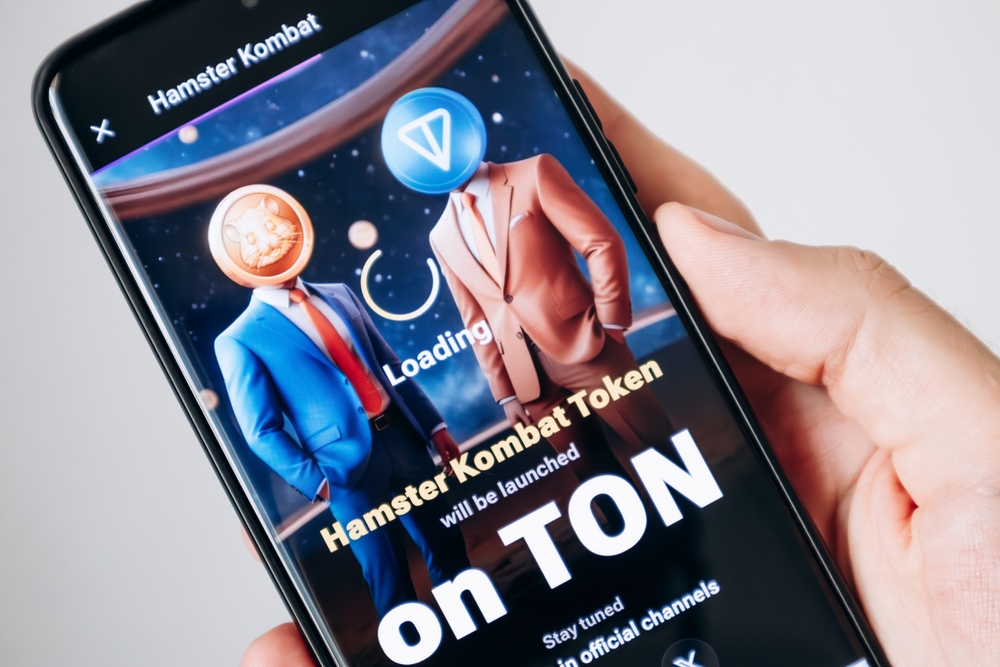Hamster Kombat is the most recent Telegram-affiliated crypto game to become viral, similar to Notcoin. This is what should be known.
Currently, hamsters are not fighting. However, while Hamster Kombat’s title may be slightly deceiving, the Telegram-founded clicker game has rapidly become a major leader in the play-to-earn realm by exploiting Notcoin’s winning model.
The Hamster Kombat team recently received their plan to execute an airdrop on The Open Network (TON), awarding players for amassing coins by finally dropping the actual, tradable crypto tokens. The strategy will direct several people towards the game. However, at the time of writing, new players can join and accumulate coins prior to the airdrop. This article discusses what should be known concerning Hamster Kombat, how to play it, and what is known regarding the airdrop and token.
Hamster Kombat Explained
Hamster Kombat involves players tapping away to acquire coins in a Telegram-native app, meaning that a person must open a chat on Telegram to play the game. According to the game developers, more than 100 million users have been amassed. These users are eagerly tapping away in-game to acquire coins that will seemingly be utilized to establish the number of tokens to be received in the imminent Hamster Kombat airdrop.
Hamster Kombat has been there since March. However, it has picked up serious momentum following the conclusion of the Notcoin airdrop, possibly because tap-addicted gamers are moving to a new game with a looming airdrop and token. The game’s main concept resembles Notcoin’s, with minor, richer game mechanics included on top. In other words, it combines a tap-to-earn alongside the crypto exchange simulation.
In Hamster Kombat, the player is an up-and-coming crypto exchange’s chief executive officer. The player must raise the exchange to new heights never witnessed before in the hamster’s world. For this to happen, a golden coin is tapped to earn coins, which are later utilized to purchase upgrades.
How to play Hamster Kombat?
The game begins in a manner similar to Notcoin. Players tap away at a golden coin in the Telegram application. However, in Hamster Kombat, the initial step entails shaving the hamster for them to become a crypto exchange’s chief executive officer. Like in Notcoin, in-game points can be utilized to buy ‘Boosts’ that enhance stats, for instance, the number of points earned for every tap and the duration a person can tap prior to having a break and waiting for the energy bar to refill. Besides, there are free everyday boosters to be claimed six times daily.
After earning some points, players can use them to upgrade their exchange in the game’s ‘Mine’ tab. The tab displays all forms of upgrades players can buy for their exchange, including creating a Know Your Customer (KYC), adding coins such as Bitcoin to be traded at the exchange, or going on the Joe Rogan podcast. Each upgrade bought for the exchange earns more coins passively. For instance, 250 points are needed to add the BTC pair to the exchange costs. However, this earns a player 40 points hourly. Simply put, the additions speedily pay off and aid in driving the exchange further.
There also exists an everyday mic of upgrades that will earn a player 5 million free coins, as well as an everyday cipher that can be entered in morse code for an additional 1 million free in-game coins. Players should read the Daily Cipher and Daily Combo guides for more information.
When is Hamster Airdrop?
Hamster has revealed an imminent airdrop. However, it has been more transparent concerning it compared to how Notcoin initially did. According to the Hamster Kombat team, the token is estimated to be unveiled next month, although the target might move.
The team has yet to disclose it. There is no full information concerning how the airdrop will work. However, the team has confirmed that, unlike Notcoin, there will not be a direct change from in-game coins to on-chain tokens.
On June 6, the team tweeted that airdrops would rely on the hourly profit and other parameters to be announced later.
Editorial credit: Andrei Antipov / Shutterstock.com
